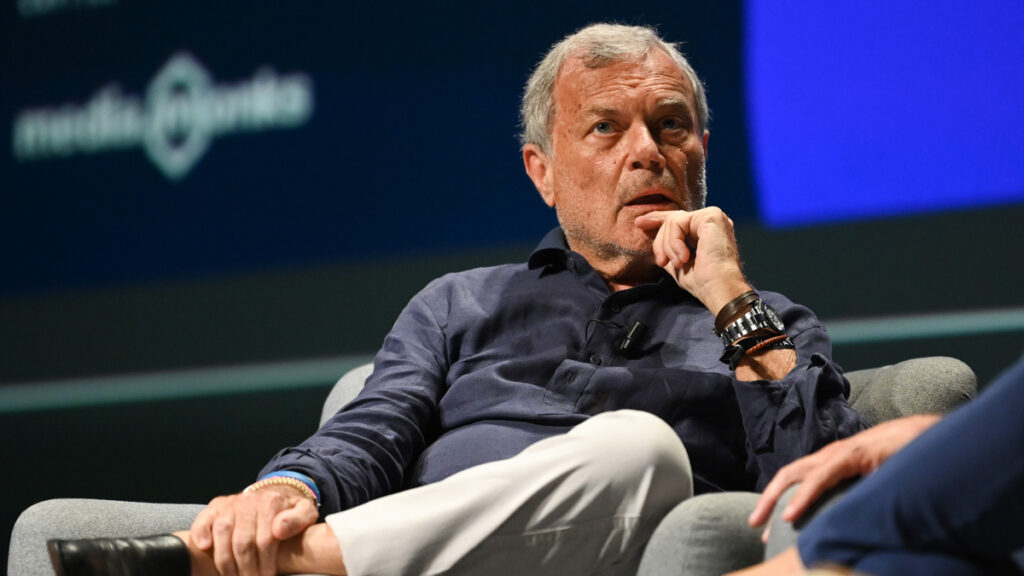Inside Sir Martin Sorrell’s world: Strategies for building empires
Sir Martin Sorrell is a titan of the advertising world. We met at S4 Capital for an exclusive interview, talking empire building and more.
 [Image credit: Eamonn M. McCormack/Getty Images for Cannes Lions]
[Image credit: Eamonn M. McCormack/Getty Images for Cannes Lions]
We walk into S4 Capital’s central London HQ a little ahead of schedule. The door to the boardroom is open as we walk past. Several suits sit around the table with Sir Martin Sorrell the main voice conducting the conversation’s symphony. As we wait in a small meeting room next door, it’s difficult not to reflect on the fact that what Sorrell refers to as his “tiny little bolthole” office is actually the home to a company worth hundreds of millions of pounds. Welcome to Sir Martin’s world.
Watch our full interview with Sir Martin Sorrell
Sorrell says: “My dad’s advice was to find an industry that you enjoy. Find a company inside that industry and build a reputation.” He’s certainly done that. Straight out of Harvard Business School, Sorrell began his early working life as a consultant at Glendinning Associates in 1968, although the placement didn’t last long. With the Vietnam War raging, anyone could be drafted to fight. “My good Jewish mother wouldn’t let her son be drafted,” says Sorrell. When he got back to the UK, he worked for Mark McCormack, the founder and chairman of I.M.G., an international agent for sports figures and celebrities, whom he met during his time at Harvard.
After unsuccessfully trying to kickstart a business with his beloved father Jack, Sorrell worked at James Gulliver Associates where his path crossed with Saatchi & Saatchi. He joined the advertising behemoth in 1977 and began cutting his teeth as their CFO. “In those days, the unwritten rule was that you didn’t pitch each other’s clients,” says Sorrell, but the Saatchis did it anyway. After almost a decade and after being referred to as the third Saatchi brother, he was ready for a new challenge. This is where the next part of Jack Sorrell’s advice kicks in: “If you fancy doing something on your own when you’re mid-career, give it a go.” So, at the age of 40 and with a burning desire to build his own company, he left Saatchi & Saatchi to make it happen.
Sorrell explains how he and partner Preston Rabl screened listed companies for a match in 1985. “They had to be worth £1million because we didn’t have more money than that,” he says. “It had to be a manufacturing company because it would be lowly rated. It had to be profitable, with no debt, and have management that is mature but not senile.” The company that fit the bill was a wireworks in Dartford, Kent, called Wire and Plastic Products. That was how one of the world’s largest advertising companies – WPP – was born.
Sorrell recalls: “We built the market cap in the first 18 months from £1million to £150million, and then we made our audacious bid for JWT.” J. Walter Thompson boasted famous campaigns such as “A Diamond is Forever” and “I’m a Toys R Us kid”, and whose revenues were 13 times greater than WPP.
The daring $500million+ hostile takeover was achieved by a mixture of debt and selling new shares in the business to raise funds. “We then found a Japanese building within JWT which Morgan Stanley advised it was worth $30million but we sold for $203million. After a 50 per cent tax hit, we netted $100million towards the value of the deal,” says Sorrell. Within two years, JWT’s profits had doubled.
Sorrell has been referred to as the biggest celebrity in the ad world, but he’s been a figurehead in the industry’s creatives vs. data debate: the storied Mad Men vs Math Men war. His famous feud with advertising titan Sir John Hegarty (one of the Mad Men, in this analogy), and someone who prides himself on being the anti-Sorrell, has seen the industry scramble to take sides in the debate. In many ways, Sorrell’s focus on data was well ahead of its time. When taking over JWT in the 1980s, he looked like creativity’s nemesis. But in a world run by data, his philosophy is the modern zeitgeist.
WPP would grow to 205,000 employees in 3,000 offices in 113 countries, with a peak market cap of over £24billion (a far cry from the £9billion it is today). However, in 2018 the WPP board hired an outside law firm to investigate alleged “personal misconduct”, which included bullying junior employees and misuse of company funds. Sorrell denied all allegations. Despite the investigation finding that “the allegation did not involve amounts that are material”, he left WPP after 33 years in charge. The then-73-year-old wasted no time in setting up his next venture, S4 Capital.
Six years later, the company has had ups and downs – and its share price suggests it is having a difficult time – but he describes the company as having a “truly disruptive model” because it focuses purely on digital and is purely data-led. “The data and digital media sides of the business demand much more than the ‘creative’ side.” Digital media’s biggest asset is its feedback loop. Sorrell explains that with the advent of AI, you can make an advert in under three minutes. Combine this with first-party data and signals from platforms such as Meta or Google, you can develop “literally millions of pieces of content” for a campaign.

Sorrell’s acquisition-led approach to growth has followed him to S4 Capital. When asked how he finds these businesses for acquisition, Sorrell says that it starts with a mix of people within the firm, journalists, competitors, and most importantly: clients. “Clients are the best source of free information. Every client you see, you should say ‘Who are the best agencies you’ve come across?’ and you get your list that way.”
Not all of these deals are rosy success stories that get plastered on the news every day. According to the Harvard Business Review, between 70 per cent and 90 per cent of M&A deals fail. “The easiest part is getting the deal done,” says Sorrell. “The most difficult part is getting it to work. As people say, but for clients and people, this would be a great business.”
Where did this man “born and bred in the ghetto of North West London” get the chutzpah to take on the advertising world? “People always tend to think about control,” says Sorrell. “Therefore, their vision is about what they can control. They tend to hire people who are not better than them, and they tend to acquire businesses that are not bigger than them, so that tends to be limiting. What Maurice and Charlie [Saatchi] used to say is that nothing is impossible.”



